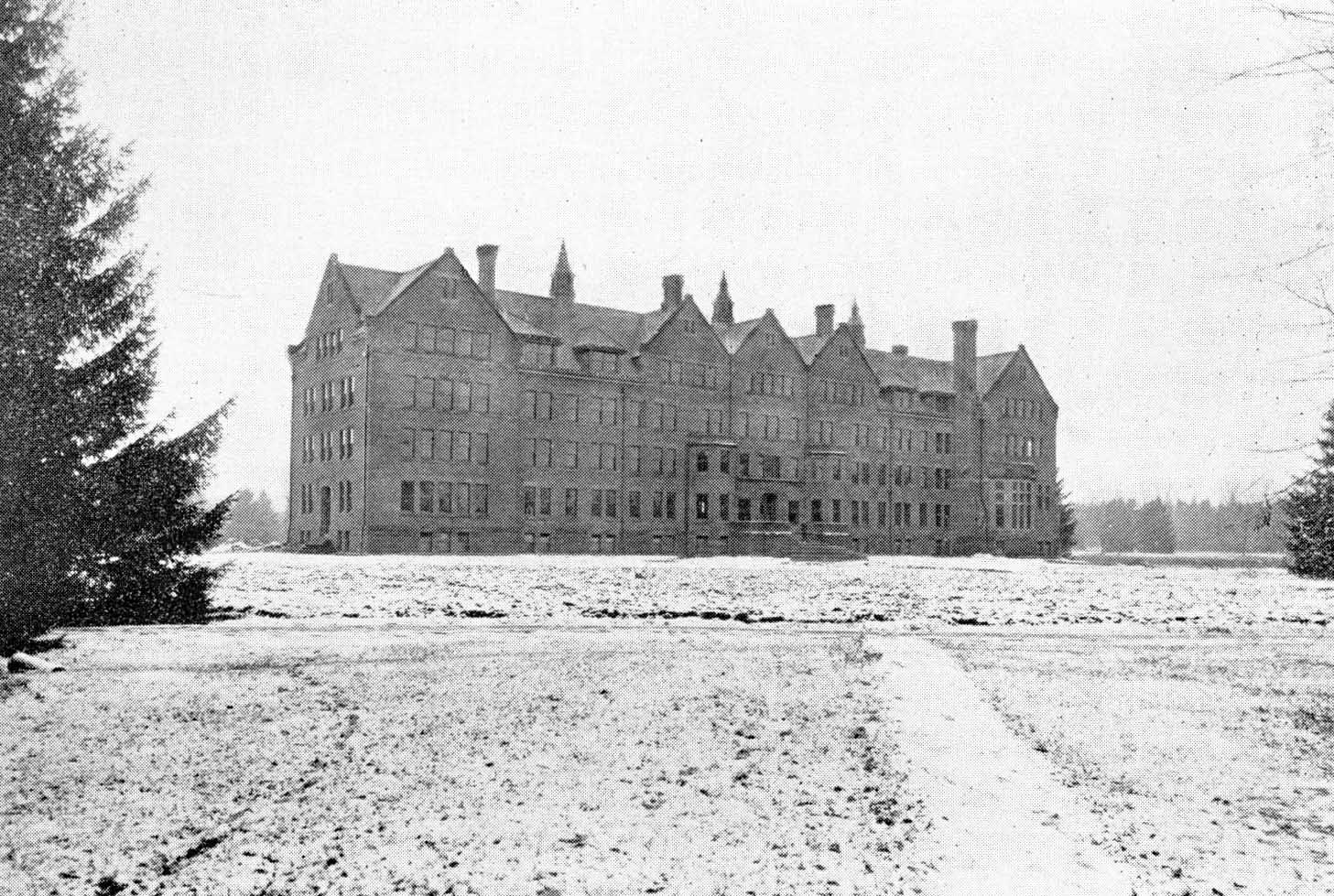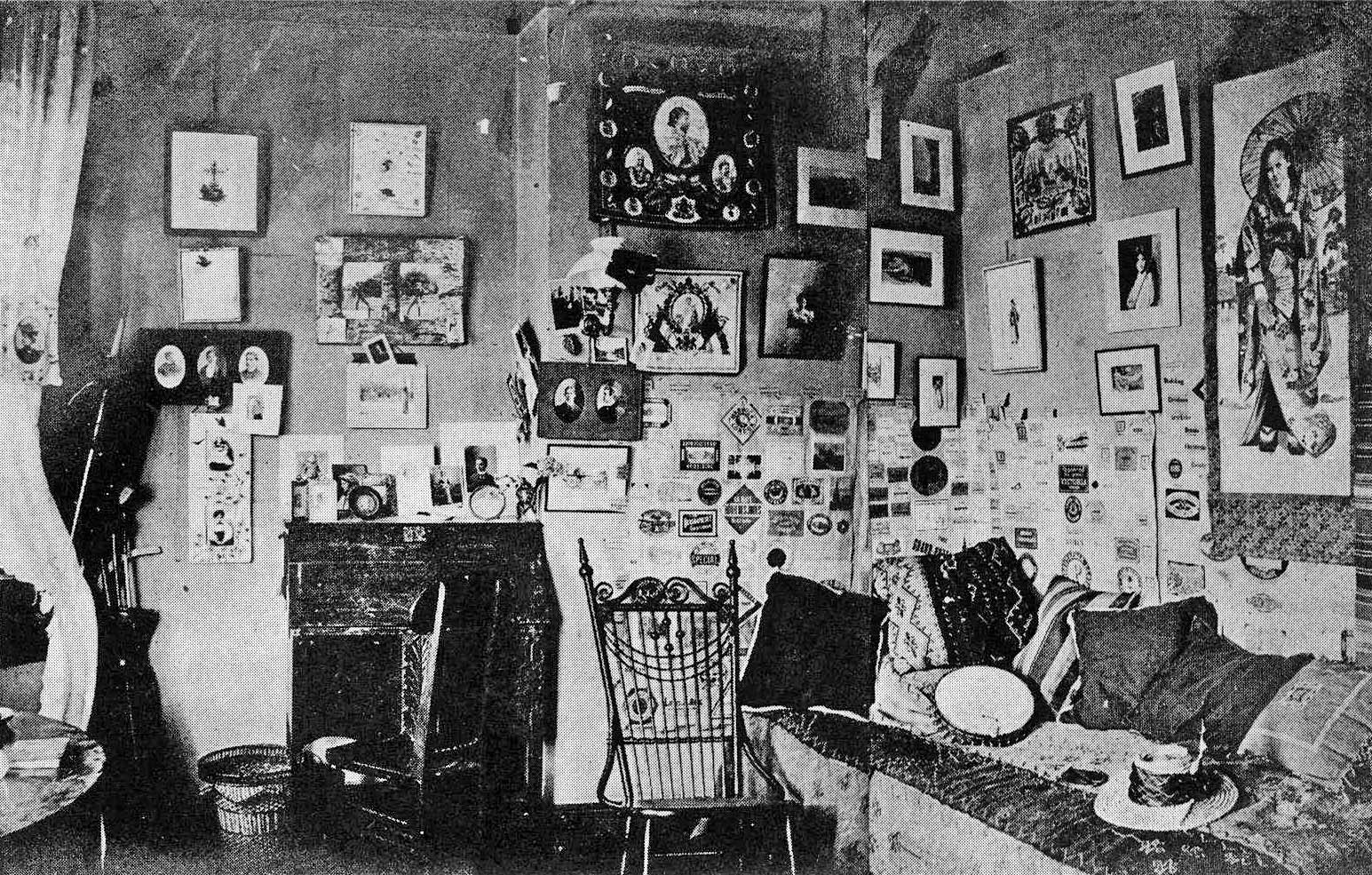Strong House


Strong House (1893)
Francis R. Allen
In 1889, the Vassar campus consisted of Main Building, the Observatory, the former Calisthenium and Riding Academy (later Avery Hall), the Alumnae Gymnasium (later Ely Hall), Vassar Brothers Laboratory, some service buildings, and under 500 students. The college had recently undergone an administrative crisis, leading to the appointment of President James Monroe Taylor in 1886, and enrollment was on the decline. Taylor, however, was well on his way to fixing that. He had, just the year before, abolished the college’s preparatory program, a financially risky move that refocused and reinforced the college’s academic reputation.
But Smith and Wellesley, both of which opened in 1875, offered “cottage-style” living in buildings specifically meant as dormitories, in contrast to Vassar’s all-encompassing Main Building. While the security and traditionalism of the one-building system had been attractive in Vassar’s early days, when the idea of a women’s college was “experimental” and controversial, by the 1890s it was becoming old-fashioned. Late 19th century dormitories or “cottages” were conceived of as large houses with common rooms and parlors clustered around the entrance. Many trustees and alumnae still liked the idea of the entire college under one roof, but the students and the faculty were getting restless and feeling crowded. “The problem of the accommodation of students,” Taylor told the trustees in October in his annual report, “is…a pressing one. The building [Main] is practically full; it will never again be possible to require students to room as they did in the early days of the college…. Whatever may be the disadvantages of the so-called ‘cottage system’ it is now in favor, and we must in some way meet the popular want.”
The trustees eventually agreed with Taylor, pledging $75,00 toward a new residence hall and engaging New York architect Francis R. Allen to design it. He had already designed four faculty houses on Raymond Avenue and would go on to have a long and fruitful association with the college, creating, among others, Thompson Memorial Library and several other residence halls. When the budget for Allen’s eventual plan was found to be $35,000 over the college’s allocation, trustee John D. Rockefeller, a frequent donor, agreed to make up the balance. His daughter, Elizabeth “Bessie” Blount Rockefeller Strong had been a special student for two years—1886–1888—and he asked that the new dormitory be named for her. A location near to Main and the other campus buildings was chosen, and construction of the hall, as well as Rockefeller’s gift, was announced on June 8, 1892.
The building was completed in December 1893. For three months previously, the Windsor Hotel in Poughkeepsie had been rented out to house its future residents. The new dormitory, a dark brick building with brownstone trim in a modified Elizabethan style and popularly referred to as The Strong, contained single rooms for 100 students, a few suites, and a large dining room. This latter had a two-story ceiling, so as to minimize noise levels when all the residents ate together. The common rooms, including the parlor with its huge fireplace, echoed the medieval inspiration of the exterior.
Despite a rather severe outward appearance—in 1896, an anonymous commentator wrote that with ivy plantings, “before long, ‘the Strong’ will present the picturesque ivied appearance that is the charm of the old building”— the new building was an immediate success.


The 1893 Vassarion described it as “The most perfect of its kind. Conducted on principles suggested by the name.” By 1895, less than two years after opening, applicants exceeded available space, leading to the construction of Raymond House in 1897.
Strong, like all residence halls for much of Vassar’s history, contained its own dining room and staff, presided over by a stewardess or matron. Vassar Miscellany articles of the period provide a window into the life of the hall—the class functions and alumnae events, the furnishing and refurnishing by generous Vassar graduates, and infrequent appearances in student-written verse.
In 1969, Vassar became coeducational and, a year later, like other residence halls, Strong became coeducational. In 1972, however, it was chosen as the permanent women-only dorm due to its small size and good location. The decision to keep a woman’s only dorm was made not as a concession to Vassar’s history, but, according to college historian and former Dean of the College Colton Johnson “for two pragmatic reasons: a fair amount of the women already in the college had enrolled because Vassar was a women’s college, and they wanted their housing arrangements to stay that way. Also, there was no great pressure from the numbers of men in the early days [of coeducation], and thus no reason not to reserve a quad dorm for women.”
Chechi Mendez Hodes ’72 remembers this era fondly, with the “peacefulness and coziness of an all-female house” providing a respite from the “rambunctious experience” of coed housing. Desk messengers even developed a code to alert Strong residents to male visitors, so “you’d know not to run downstairs with rollers in your hair and wearing a bathrobe.” The choice was initially a popular one, and Hodes “would not exchange [her time in Strong] for anything that I can imagine.” When increased demand for women-only space almost caused a switch to the larger Raymond House in 1975, student petitioning by Strong kept its single-sex status.
In 1980, Strong’s tenacious women-only tradition provoked a satirical piece by “Goask Alice” in the April Fool’s issue of The Miscellany News announcing the admission of men to Strong. The director of residence, said “Alice,” declared the “switch would begin immediately, the first male students arriving next week. ‘There are simply too many women in there…. I don’t know what we thought we were doing.’”
Whoever lives there, Strong was responsible for the look and feel of Vassar’s residential quad, setting an architectural and self-determining precedent for residential housing at the college.
Related Articles
Sources
Buis, Micah. “Strong House.” The Vassar Alumnae Quarterly. Fall 2005.
Daniels, Elizabeth. Main to Mudd and More. Poughkeepsie: Vassar College, 1996.
Van Lengen, Karen and Lisa Reilly. The Campus Guide: Vassar College. New York: Princeton Architectural Press, 2004.
The Vassar Miscellany
TF 2013